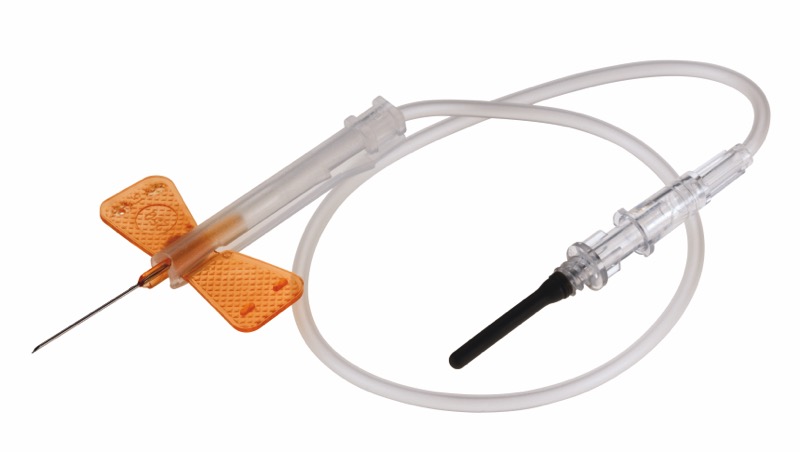As the population continues to live longer, chronic diseases increase, and staff shortages in the healthcare sector persist, demand for diagnostic testing is reaching new heights.
Even before the pandemic – which brought the need for rapid testing into sharp focus – demand for diagnostic services in the UK was already high.
Six-week waits for diagnostic services have increased by 17% each year since 2010.
And tests are increasingly carried out by staff without extensive specialist training and so new diagnostic devices must ensure they cater to the evolving needs of healthcare workers.
So, two years on from the outbreak of COVID-19, what are the key challenges in the diagnostics field, and how are manufacturers adapting to better support diagnostics professionals?
Supply vs Demand
“Increasing demand for diagnostic products is resulting in significant supply issues,” explains Tracey Sainsbury, group product manager at Owen Mumford.
“And laboratories are still reeling from the surge in demand caused by the pandemic, leading to ongoing shortages.”
Notably, in early 2022, the US Food and Drug Administration shared that blood specimen collection tubes were still in short supply due to nationwide supply chain issues and the COVID-19 pandemic. Meanwhile, the EU In Vitro Diagnostic Regulation (IVDR) introduced in May 2022 has a broader scope, meaning that a greater proportion of in vitro devices are subject to regulations than under the previous legislation.
“It is predicted that as many as 22% of products on the market today could fail to meet the standards of the new rules and will lose market access until manufacturers are able to complete the lengthy certification process, further compounding supply issues,” said Sainsbury.
Pressures on diagnostics staff
Alongside problems with supply, staff shortages are also constraining diagnostic services.
A 2018 census by the Royal College of Pathologists found that just 3% of histopathology departments had enough staff to meet demand.
Similarly, in 2018, the Royal College of Radiologists revealed that almost 97% of UK radiology departments could not meet diagnostic requirements and that almost one in 10 radiologist posts were vacant.
While these new hubs are helping to ease the strain on hospitals, training pathways may need an overhaul since staff may have a wider range of responsibilities
One solution to the staff shortage is the creation of new diagnostic hubs which allow GPs to refer patients directly to local centres.
Sainsbury said: “Ninety community diagnostic centres are now in operation in the UK, helping to combat the backlog created by the pandemic.
“So far, a million additional tests have been provided from these centres, and the NHS has committed to rolling out a total of 160 centres able to provide nine million additional tests by 2025.
“While these new hubs are helping to ease the strain on hospitals, training pathways may need an overhaul since staff may have a wider range of responsibilities.
“And new devices must cater for the evolving needs of healthcare workers with a greater number of more-inexperienced and less-specialised staff undertaking testing duties.
“Manufacturers have to be aware that their products may be used by less-experienced professionals.”
Needlestick injuries are increasingly common among healthcare workers, leading to a new generation of safety needles, such as the Unistick ShieldLock from Owen Mumford
Strengthening safety
With 70% of clinical decisions being made using diagnostic products, it is crucial that healthcare workers are supported with safe and effective in vitro diagnostic devices.
Sainsbury said: “It is imperative that products provide maximum protection as more diagnostic centres are set up and testing increasingly takes place outside of hospitals.
“Specifically, a recent study by the Royal College of Nursing revealed that needlestick injuries have risen by 50% since 2008.
“And, according to another study, phlebotomists are at risk of at least one instance of accidental percutaneous blood exposure a year.
“This issue therefore needs greater attention.
“For their part, manufacturers can continually optimise the usability of their products so that protection from injury is as intuitive as possible.
“Safety devices are a good example of this adaptation, offering additional protection, with guards that cover needles once used, helping to prevent injury while allowing healthcare professionals to continue using the same methods to perform tests on patients.”
Digital assistance
Digitalisation is pivotal in supporting diagnostic centres and is seeing increasing acceptance since the pandemic.
One survey of breast pathologists found them eager to introduce elements of remote working and digital pathology into their workplace, with a digital approach enabling results to be shared with colleagues who are not working in the same lab.
New devices must cater for the evolving needs of healthcare workers with a greater number of more-inexperienced and less-specialised staff undertaking testing duties
Sainsbury said: “The technology is not yet in widespread use, but could help laboratories significantly reduce turnaround time.
“One company has created a network of consultant pathologists, the majority of which operate completely digitally, and this has been very successful.
“Thirty NHS trusts currently use the system and within these, 94% of cases are reported within 72 hours.”
She added: “The future of diagnostic services is dependent on a number of key factors.
“Localising healthcare through diagnostic hubs will help to reduce the burden on a stretched system and improve the patient experience.
“And intelligent staffing solutions, such as re-assessing staffing models or diversifying recruitment pathways, would help to increase the diagnostic workforce and to use existing resources more efficiently.
“To ensure that testing is as safe and efficient as possible, manufacturers must balance the development of devices that are user-friendly with the introduction of new advancements in technology.”
